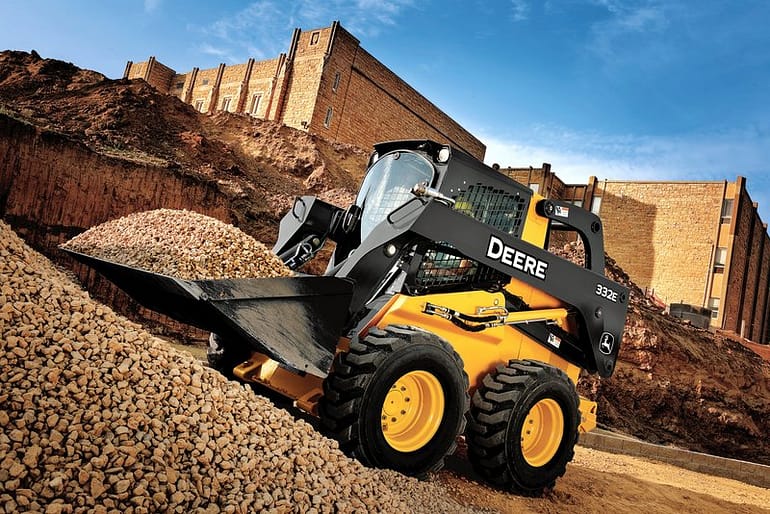Whitewaters Training
Ltd

A skid steer, also known as a wheel loader or skid loader, is small, versatile construction machinery frequently used for digging. It can link its arms to numerous pieces of equipment for use in various construction and landscaping tasks, and it is lightweight and versatile.
The skid steer has the versatility of attachment possibilities, which enables it to complete a wide range of tasks with a single piece of equipment, which is its defining feature. A skid steer’s conventional attachment is a bucket. Teams may substitute any other options to enable a skid steer to carry out the duties of several different types of equipment. Traditionally, operators have lifted or moved large items using the skid steer’s bucket.
The small-frame model is the greatest option for interior work, landscaping, and site development since it is lighter and easier to handle in confined and tight spaces. The small loader is the most typical size for landscaping, site development, final grading, and adding soil layers over patios, walkways, and other locations. Since they have a low profile and are very lightweight, they are also recommended for work on basement parking buildings. Additionally, small loaders may be fitted with any hydraulic attachment, making them ideal for minor demolition operations.
Weight: More than 1,750 LBS
Horsepower: More than 50 HP
In situations where conventional machines wouldn’t fit, a medium-sized skid steer is sometimes employed with different attachments to perform as a backhoe or digger. It can travel over sidewalks, concrete plazas, asphalt, and landscaped areas without subgrade rutting and is used with either tyres or tracks.
Weight: 1,750-2,200 LBS
Horsepower: 50-70 HP
For heavy grading work, excavation, drilling, and significant demolition work, giant loaders are appropriate. A huge loader may carry and dump a lot of soil with hydraulic attachments. It may also be utilized for forestry operations and as a telehandler.
Weight: Over 2,200 LBS
Horsepower: Over 70 HP
Choosing a Suitable Skid Loader is an essential task, and it requires an analysis of the space where the equipment is to be operated, the type of loads that are to be lifted, type of work ( drilling, demolishing, hauling, earthwork, sweeping, or other work)
The bucket of a skid steer can remove snow from a construction site or road quickly, but operators may opt to utilize a snowblade or snowblower attachment in more severe winter weather. Because it may be equipped with accessories like a ripper, trencher, tiller, or wheel saw, a skid steer can also undertake excavation work. Skid steers can be connected with a cement mixer or a pavement miller to help speed up operations on construction and building projects. It is a fantastic option for landscape work thanks to the stump grinder, wood chipper, tree spade, and trench-digging attachments, whilst pallet forks and bale spears are more suited for agricultural and warehouse operations.
Attachments :
A skid steer is sometimes referred to as a “Bobcat” or “Bobcat machine” by experts. Along with its rivals John Deere and Caterpillar, Bobcat is a manufacturer of skid steers for the construction industry. Therefore, the distinction between a skid steer and a Bobcat loader is null and void.
Skid steers are very versatile pieces of equipment, mainly when used with various attachments that are readily available. They might not, however, be the ideal option for all applications. A mini track or compact track loader could be preferable in some circumstances. For instance, a tracked machine that will cause less damage to the grass and require less redo, saving time and money, is the ideal option for a homeowner or contractor working on an established lawn. Or, similar to the compact skid-steer loaders, a little track loader is an excellent method to reach small or constrained spaces, such as through a backyard gate or in between closely spaced buildings.
WhatsApp us
